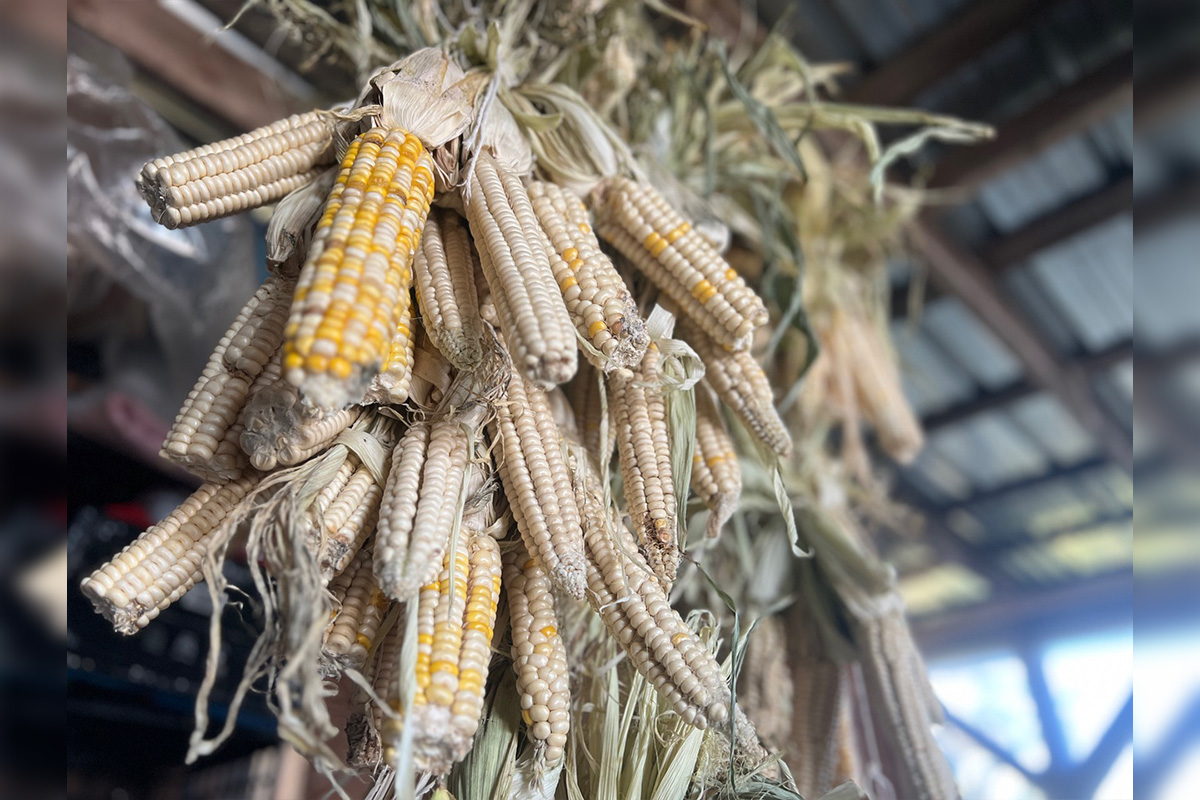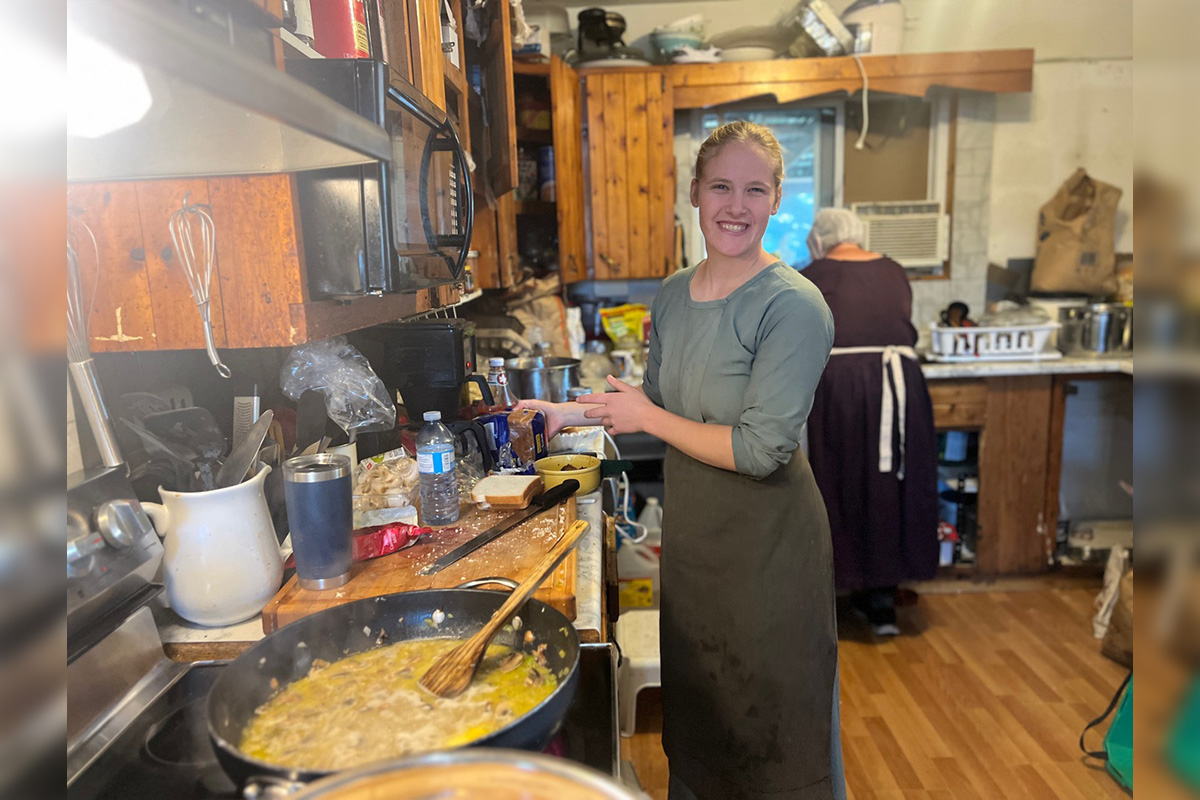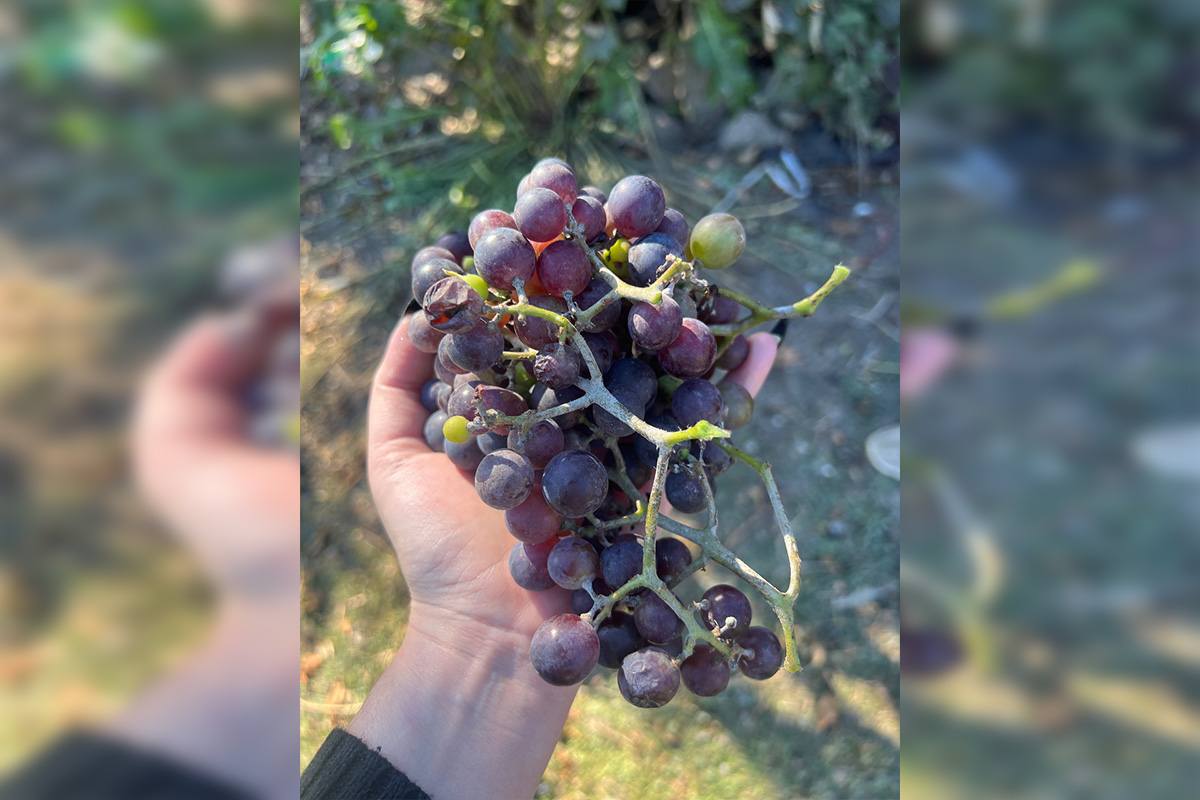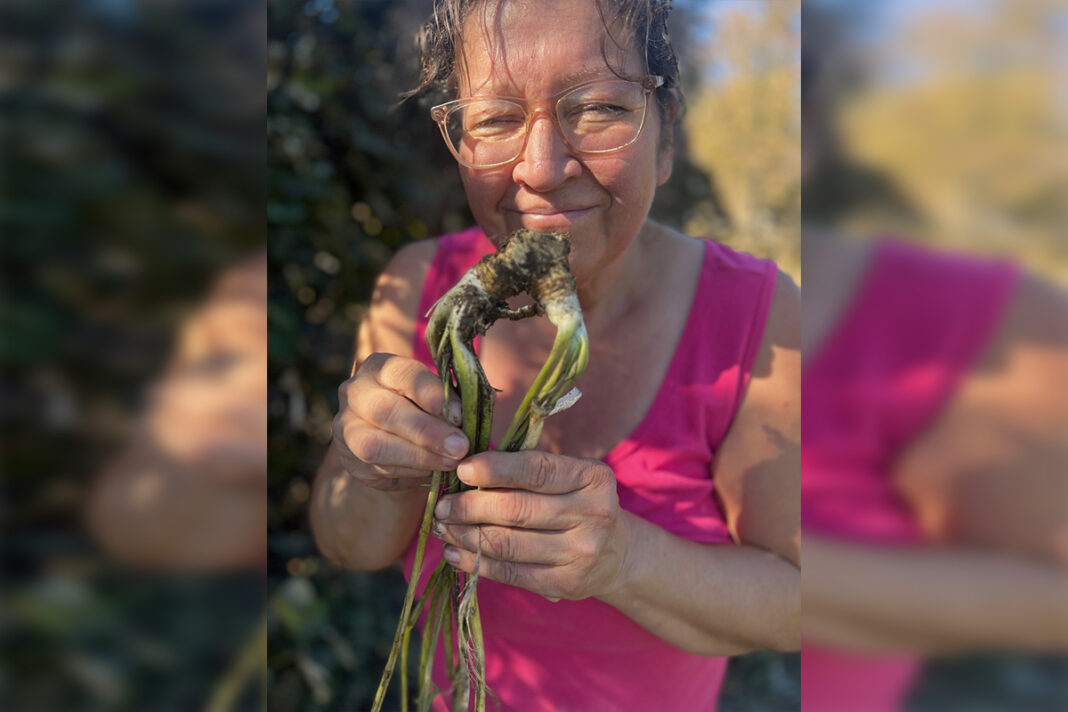MANITOULIN—As the harvest moon casts its gentle glow over M’Chigeeng First Nation, Pam Roy’s home radiates warmth and the mouthwatering aromas of simmering foods. This is the season when she and her family gather the bounty of their labour—a time for celebration, preservation and sharing traditional recipes that have been passed down through generations.
Pam, a devoted homesteader and caterer, has transformed her home into a hub of culinary creativity. Each year, she eagerly anticipates the moment when the first crops can be harvested, using her hands to nurture the earth. “This is my hominy corn,” she explains, pointing to a stunning array of dried corn hanging from the rafters. “We grow this at my partner’s place. The birds love it, so when he takes his cow corn off, I have to take it off too.”
Pam’s connection to her crops is evident as she describes the intricate process of preparing the hominy corn. “I let it hang here all winter, and then when it’s time to cook, I boil it in hardwood ashes. It turns yellow instantly,” she beams, recalling the joy this transformation brings to her family meals. This hominy corn, a staple in traditional Indigenous corn soup, embodies her commitment to preserving the flavours and practices of her heritage.

For the past eight years, Pam has also cultivated sunflowers, using the seeds from each harvest to plant the next generation. “They’re not just beautiful; they’re a part of our food system,” she notes. The sunflower seeds, along with her canned tomatoes, beets, and even beet horseradish, find their way into family meals and gatherings. “It’s healthier, and it tastes way better. I wish more people did it,” she sighs, reflecting on the decline of traditional food preservation practices in today’s fast-paced world.
Food Preservation Tips
Pam’s journey into canning began as a necessity, a way to ensure that her family could enjoy the fruits of their labour year-round. Here are some of her top tips for those interested in DIY food preservation:
1. Start Small: If you’re new to food preservation, begin with one or two items. You can expand your skills over time.
2. Use Fresh, Local Ingredients: For the best flavour and nutritional value, choose seasonal produce. Visits local markets or your own garden to select the freshest ingredients for her canning.
3. Learn Basic Canning Techniques: Understanding the difference between water bath and pressure canning is crucial. Water bath canning is great for high-acid foods like tomatoes and pickles, while pressure canning is needed for low-acid foods like meats and vegetables.
4. Prioritize Cleanliness: Sanitize all your jars and utensils to prevent spoilage. Cleanliness is key in preserving food.
5. Label Everything: Keep track of what you’ve canned and when by labeling each jar. This will help you rotate your stock and use older jars first.
6. Explore Fermentation: Fermenting foods like sauerkraut or kimchi is another great way to preserve food. Fermentation not only preserves but also adds beneficial probiotics.
7. Involve Family: Make food preservation a family affair. Involving children in the process helps pass down traditions.
8. Embrace Imperfection. Not every batch will turn out perfectly, and that’s okay. It’s all part of the learning process.
Central to Pam’s philosophy is the importance of teaching these skills to future generations. Her hands-on experience connects her family to their food and culture, instilling in them a sense of responsibility and respect for the land.

Pam also emphasizes the Ojibwe teachings around reciprocity and the love for the land. “When we harvest, we put good energy into the food we eat,” she explains. “Just like when we pick medicine, that love goes into the food.” This profound connection to the land and its gifts is the heartbeat of her homesteading lifestyle, a practice rooted in the past yet alive with purpose in the present.

As the harvest season unfolds, Pam reflects on her role as a steward of tradition. She knows that the skills she teaches her family go beyond mere cooking; they are lessons in sustainability, respect for nature, and the importance of community. In a world that often overlooks the value of food preservation, Pam proves that through the warmth of her home and the bounty of her harvest, she is weaving a rich tapestry of culture, love, and connection to the land for generations to come.






